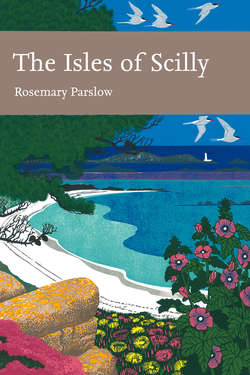Читать книгу The Isles of Scilly - Rosemary Parslow - Страница 39
THE KELP INDUSTRY
ОглавлениеFor some hundred and fifty years from the late seventeenth to the early nineteenth century the burning of kelp was an important local industry that involved almost every family on Scilly (Fig. 16). When kelp burning was in progress, ‘wreaths of smoke rising amidst the dun verdure and hoary carns of these pretty isles’ apparently made them look all the more ‘pleasing and picturesque’ (Woodley, 1822). This might have seemed picturesque from a safe distance, but it is known that the clouds of acrid smoke polluted the air and stank out the houses and the washing lines for weeks on end. James Nance introduced kelp burning to Scilly in 1684, at a time when their more ‘usual’ means of livelihood, smuggling and wrecking, had been curtailed by the introduction of lighthouses and a customs house (Over, 1987). Activities such as collecting the seaweed, stacking it to dry and processing it would have involved the whole family. When it was burned it produced soda ash, which at the time was essential for the making of glass. Although the seaweeds collected were generally called ‘kelp’, they were mostly different species of the large wracks. The species mostly involved were the following:
knotted wrack Ascophyllum nodosum
bladder wrack Fucus vesciculosus
serrated wrack Fucus serratus
driftweed Laminaria cloustini
sugar wrack Laminaria saccharina
driftweed Laminaria digitata
According to Over (1987) only the fucoid seaweeds would have been a significant part of the harvest in Scilly because of the difficulty of collecting the big Laminaria seaweeds that grow in deeper water. However, storms frequently drive masses of seaweed onto the shore where it can be collected, and use of a boat could also have made it possible to access the Laminaria beds at low water springs.
Starting in March, families would collect the seaweed and carry it to places where it could be heaped up and dried. Deep stone-lined pits just above the shore were used to burn the seaweed, and these were kept going continually until the mass of weed began to liquefy, when it was stirred in a particular way and left to solidify. This lump of ‘kelp ash’ was eventually shipped off to Bristol or Gloucester to be processed for use in glass making, as well as for the manufacture of soap and alum.
It was necessary to haul huge amounts of the algae up the shore (it took
FIG 16. Burning kelp in pits by the shore to produce soda ash was a stinking and unpleasant task. The industry lasted for some 150 years until about 1835. (Gibson collection)
some 3-4 tonnes of weed to produce 127-152kg of crude ash before refinement), which could mean a family was collecting something in the order 268 tonnes of wet seaweed in a year. This would have had a considerable denuding effect on the shore and must have been quite devastating to those species associated with the algae. In some years it seems the crop of algae was not enough to go round. There is some indirect evidence of this in the court cases recorded at the time that refer to islanders infringing the rights of others by taking kelp they did not own. By law, ‘no person was to cut…off an inhabited island where a horse could go among the rocks at low tide’, presumably as these stands of kelp were already allotted. One would imagine that when the kelp was not so abundant and families became hard-pressed to find enough to fulfil their requirements, life must have been increasingly hard (Over, 1987). Kelp collecting was not confined to the inhabited islands: for example, some islanders spent the summers on Great Ganilly collecting seaweed.
The kelp industry spread all around the coasts of Britain, although it was not initially popular everywhere; in Orkney, the islanders of Stronsay rioted in 1762. But soon the high prices paid for the soda ash ensured that the practice became the main means of livelihood for many coastal and island communities (Berry, 1985). This was helped by wars and protective tariffs that blocked off the usual foreign sources of alkali, particularly ‘barilla’ glasswort Salicornia sp. from Spain. Eventually the industry fell into decline after the Napoleonic Wars, and it never recovered once it was found easier to manufacture soda chemically. Presumably the shores soon recovered and the algae soon grew again unchecked.
There are few signs now of this extraordinary industry, just a few abandoned kelp pits above the shoreline and the remains of a handful of quays from which the kelp was exported. There is a good example of a kelp pit below Kittern Hill on Gugh, with others on White Island, St Martin’s, on St Martin’s itself and on St Mary’s – and there are several on Toll’s Island, St Mary’s. These are now just shallow stone-lined basins in the turf, not as deep as they would have been when in use. There are ruined quays at Pendrathen and on Teän, as well as on White Island, on Toll’s Island, and at Watermill (Bowley, 1990).
Seaweed was also used to manure the fields, a practice which was in use until quite recently in the 1960s and 1970s. In the past both sheep and cattle would also graze on ‘oar weed’ (Borlase, 1756). A few farmers and householders still take seaweed to use on their crops, usually composting it until it has rotted down and the rain has washed out some of the salt.
